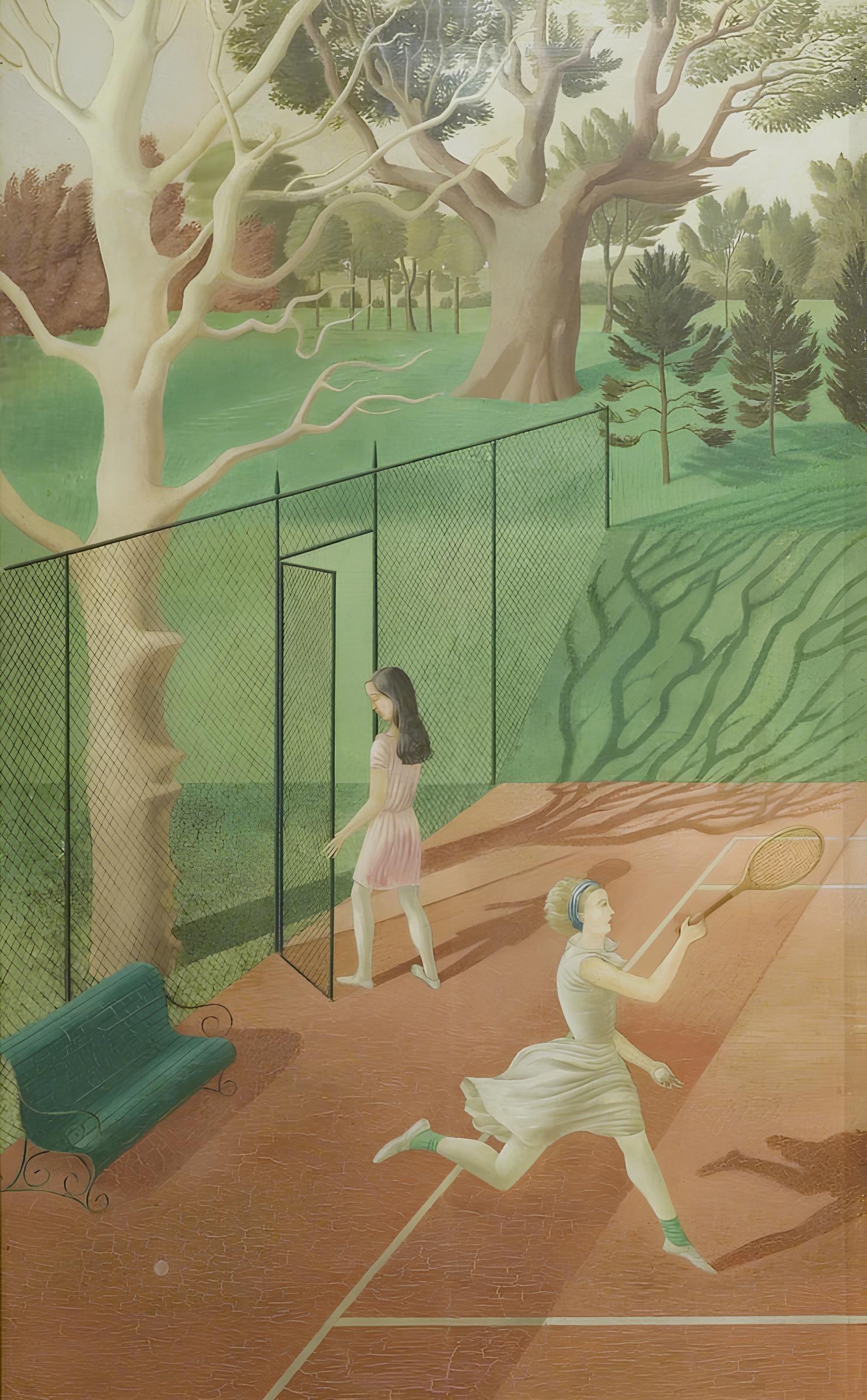Description
Eric Ravilious, a name that resonates in the history of British art of the twentieth century, is undoubtedly enshrined through his work "Tennis (Triptych - Left wing)" of 1930. This piece, part of a triptych, exhibits not only its mastery technique, but also its ability to capture the essence of sport and the environment in which it develops.
When observing the "tennis paint (triptych - left wing)", the first thing that attracts attention is the vibrant and serene atmosphere that Ravilious manages to transmit. The composition is dominated by a tennis court, where perspective and detail seem to transform this daily space into an almost theatrical scenario. The court, meticulously drawn with lines that clearly delineate the limits of the game, extends to the horizon, giving a sense of breadth and depth.
It is particularly notable how Ravilus plays with light and color. The predominant tones are the green of the grass and the surrounding trees, which delicately contrast with the bright target of the field of the court and the subtle blue of the sky. This chromatic choice not only provides a quiet vivacity to the landscape, but also suggests a typical English day, cloudy but illuminated, perhaps in the middle of summer. The texture of vegetation and care with which the details of the trees are represented demonstrate a meticulous observation of nature.
The characters in the painting, although secondary in size, are fundamental in the narrative of the work. Some tennis players, dressed in the traditional white attire, are in the middle of the game, frozen in time by the artist's brush. These characters add a human and dynamic dimension to the painting, inviting the viewer to imagine the movement and energy of the party. These players are not portrayed in detail, but rather as schematic and stylized figures, which is consistent with the modernist approach of Ravilus, where the essential is to capture the essence of the moment more than individual features.
The choice to portray a tennis game is not accidental. Ravilious, known for its affinities with sport and outdoor life, uses the theme not only as a recreation celebration, but also as a comment about the society of its time. Tennis, a sport associated with the middle and high class in England, serves as a symbol of balance and control, perhaps reflecting the desire for a structured and serene order in a time of constant change and modernization.
Ravilus is inspired by the traditions of the English landscape, but with a contemporary look that separates him from his predecessors. His technique, influenced by engraving and his studies at the Royal College of Art in London, allows him to mix precision with lyricism, creating works that are both accessible and deeply evocative.
The "tennis (leaflet - left wing piece)" can be seen as a microcosm of the aesthetics of Ravilus, where detail attention is combined with a modernist interpretation of the surrounding environment. This work, although part of a triptych, sustains strongly by itself, reflecting a harmony between human being and nature, and evoking a sense of peace and continuity that transcends time.
Eric Ravilious, through this painting, offers not only a window to a specific moment, but also a reflection on everyday life and its simple pleasures. It is in this mixture of everyday life and the sublime where the true mastery of his art resides, and where "tennis (triptych - left wing)" finds its place as a significant and lasting work in the history of British art.
KUADROS ©, a famous paint on your wall.
Hand-made oil painting reproductions, with the quality of professional artists and the distinctive seal of KUADROS ©.
Art reproduction service with satisfaction guarantee. If you are not completely satisfied with the replica of your painting, we refund your money 100%.

